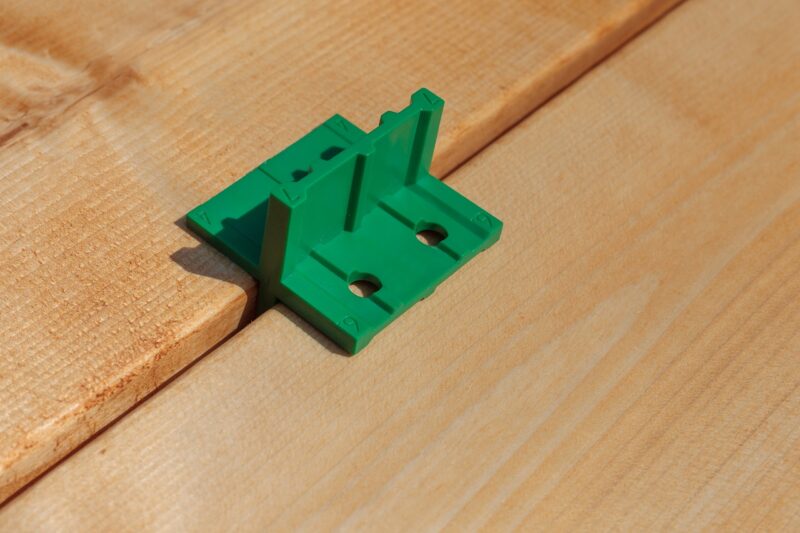Published: 14/07/25 By: Mike Bekin
Leaving a gap between decking boards is standard practice when laying timber decking. But why? Whether you are taking on a DIY decking project or have just started out in the timber construction industry, it pays to know the right decking spacing and why you need it. Find out everything you need to know in this guide.
Why Do You Need Gaps in Timber Decking?
Decking board spacing is crucial when installing timber decking. By leaving small gaps, you allow your timber to move (a little) without pushing up against each other, making it far less likely you will see splinters or broken boards.
Your timber can appear to move when there are changes in humidity levels. Because wood is porous, meaning it allows water to move through it, the moisture content of your boards can increase and decrease as the weather changes. The TDCA specifies that outdoor timber can undergo a shift in moisture from just 12% in the summer months to 19% during winter.
As these moisture levels change, your timber boards will physically swell or contract. By leaving adequate decking board spacing, this will not be a problem.
A gap between decking boards also helps with water drainage and improves airflow, keeping your timber decking free from rot.
Recommended Gap Between Decking Boards
Generally speaking, your decking board spacing should be around 5mm. This could vary slightly depending on a few factors, including:
- The timber species you are using
- If you are using composite decking, which will require narrower gaps
- The moisture content of your timber when you are installing
For example, a more dimensionally unstable timber, such as Ekki or Opepe, is more susceptible to movement, so you may want slightly more than a 5mm gap. A timber which moves less, such as Thermowood, may not require the full 5mm gap.
In terms of moisture content, the lower the percentage on the day of installation, the larger the gap you will need. For context, we recommend installing timber decking boards at a moisture content of around 16%. If your timber boards are at 14%, this is not a huge problem, but you might need to leave a 6-7mm gap depending on your timber species.
Tips for Decking Board Spacing
When leaving a gap between decking boards, there are some tips to make installation easier. To help you, here is our advice for accurate decking spacing:
- Use Spacers or a Deck Board Jig: To maintain consistent gaps between boards, use plastic spacers or a deck board jig. These tools help create uniform spacing and reduce guesswork as you go.
- Mind the Fasteners: Hidden fastener systems can maintain even spacing and a clean look, but are not suitable for a lot of the species we supply, so if you are using screws or nails, pre-drill and align carefully to avoid shifting boards or uneven gaps.
- Work with the Weather: Install decking during stable weather conditions. Extremely hot or cold days can affect the material’s dimensions, leading to inaccurate spacing when the weather returns to normal.
Find Stable Timber at EcoChoice
Want to worry less about gaps between decking boards? Choose a dimensionally stable timber with our help and reduce movement in your boards. Get in touch to find a sturdy timber species and start your timber decking order.
